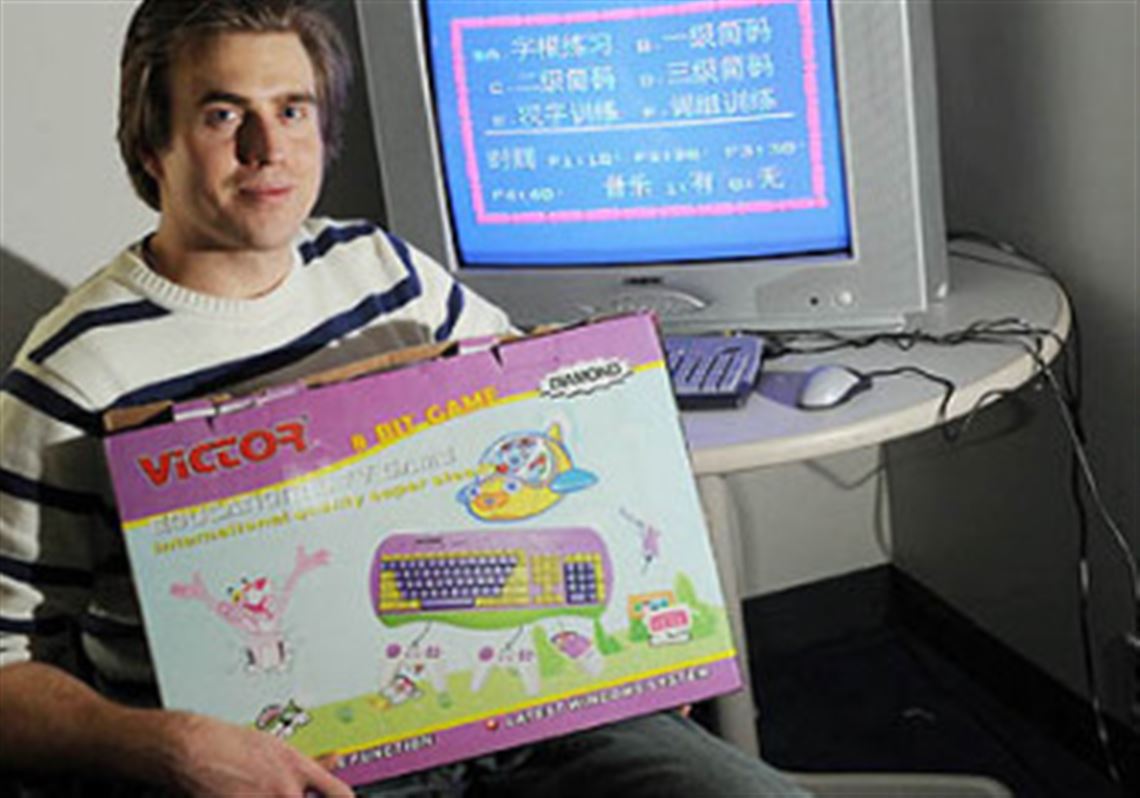In Hindu mythology, Hanuman is a divine being, a reincarnation of Shiva who is able to straddle mountains and defeat demons.
He's also well on his way to becoming a video game hero.
It's all part of a project called PlayPower, co-founded by Carnegie Mellon University graduate student Derek Lomas, designed to create free educational software for impoverished families in India and other developing nations.
The idea of using Hanuman as an action hero grew out of a conference that Mr. Lomas helped organize in December in Hyderabad, India, which drew bright young computer programmers from all over that nation.
The inspiration for PlayPower came after Mr. Lomas noticed that poor families all over India were buying $12 computers that consist of a keyboard, a processor, a game cartridge slot and a hookup to the family TV, which serves as the monitor.
The computers are rudimentary by Western standards, and have less computing power than many cellphones.
But that also means it is possible to develop games for them by using the old 8-bit technology that was featured on the Nintendo Entertainment System and Apple II computers, Mr. Lomas said.
People who grew up using Apple II computers in school will remember such 8-bit games as Lemonade Stand, Number Munchers and Oregon Trail. And on Nintendo, 8-bit technology introduced customers to Super Mario Brothers and other popular games.
Because the computer processor for such games is now in the public domain, it can be freely used to develop educational video games, and as opposed to today's highly realistic computer graphics products, "it doesn't require a $50 million development budget to make a great game," Mr. Lomas said.
At the Hyderabad conference, the participants worked on how they could tap into Indian culture to produce games that would be fun and teach valuable skills.
The first game featuring Hanuman, Mr. Lomas said, is a typing game that requires players to type English words correctly under time pressure to allow Hanuman to defeat his foes.
Kishan Patel, one of the participants in PlayPower, said that learning to type can have a major economic impact in India, "making the difference between earning a dollar a day as an urban laborer or several dollars a day as a clerk in an office."
The second game builds on an old myth in which the young Hanuman thought the sun was an apple and rose through the clouds to eat it. This game is constructed as a multiple-choice quiz, building on the enormous popularity of TV quiz contests like the one featured in "Slumdog Millionaire."
The third game tries to raise awareness of malaria, which infects 1.5 million people a year in India, by allowing players to kill off mosquitoes and build up points toward antimalarial mosquito nets.
Mr. Lomas hopes all three games can be fully finished this year, and that the entrepreneurs who sell the low-cost computers can then be persuaded to add the games to their offerings.
PlayPower is one of 14 projects that won the MacArthur Foundation's Digital Media and Learning Competition last year. It received $180,000 to spend on such initiatives as the India conference and on building up a network of volunteers.
At this point, Mr. Lomas said, more than 100 volunteers from the United States, Canada, Belgium, India, Ghana, Yemen and other nations have signed up to help develop PlayPower games.
One of them is Jeremy Galante, a childhood friend of Mr. Lomas who now teaches animation at Edinboro University.
Mr. Galante said he likes the idea of a volunteer group where "I can contribute what I know about animation and other people know about the 8-bit software and how to do graphics on that. It's kind of like a collective where everyone can contribute whatever their strengths are."
The value of the games goes far beyond the skills they teach, Mr. Lomas said. "I think that many of the more powerful educational effects of the system can be in the way it changes a kid's interest and ambitions."
Not only can the games lead some children toward learning how to program computers, he said, but PlayPower hopes to develop games featuring characters who are in white-collar professions. "If we can get them to identify with engineers or doctors or other professional roles, just that alone may be something that's valuable," he said.
Because the TV is used as the game monitor, he said, it will probably also be a way for all the family members to interact during the games.
For those donating their time to the project, he said, "It's nice to know you're able to volunteer to improve someone's life even though you're just spending some time making graphics or completing a game."
First Published: February 10, 2010, 10:00 a.m.

















